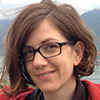Decision Science in the Age of Smart Technologies
 The growing digitization of cities and massive streams of real-time data have led to opportunities to create new insights and actionable information for decision makers. Yet, it is important to critically examine the potential role of big data to actually provide better services, or reduce the environmental impact on different urban sectors. Professor Amanda Stathopoulos has designed an innovative course, Engineering Possibilities: Decision Science in the Age of Smart Technologies that aims to do exactly this.
The growing digitization of cities and massive streams of real-time data have led to opportunities to create new insights and actionable information for decision makers. Yet, it is important to critically examine the potential role of big data to actually provide better services, or reduce the environmental impact on different urban sectors. Professor Amanda Stathopoulos has designed an innovative course, Engineering Possibilities: Decision Science in the Age of Smart Technologies that aims to do exactly this.
In spring 2020 students were challenged to independently define an urban system topic to analyze, and access the data using API. They then used an open source spatiotemporal data visualization tool to illustrate the issue and its implications. The class chose to study a number of topics centered in Chicago ranging from design of transportation infrastructure, food-desert presence, green-roof locations and energy consumption patterns, among others.

This exercise inspired students’ active learning about the role big data plays in smart city governance and how to transform data into effective, helpful policy guidance by producing a visualization. Students gained hands-on skills in accessing, filtering and visualizing large-scale geo-referenced datasets on urban systems. Finally, they were encouraged to critically reflect on what insights can and cannot be gleaned from the ubiquitous availability of data and dealing with gaps and shortcomings in the data.

In this way Prof. Amanda Stathopoulos, urges future engineers to take on leadership roles that require them to understand the interplay between societal challenges and technical solutions. There is a focus on the complexity of problems and engineering solutions with pervasive and conflicting impacts, such as the unprecedented challenges of climate change, urbanization and social inequality alongside new opportunities for planning, building and managing more livable cities.
